Haworthia Fasciata Care & Propagation Guide
Written by Iris
Nov 22 2021
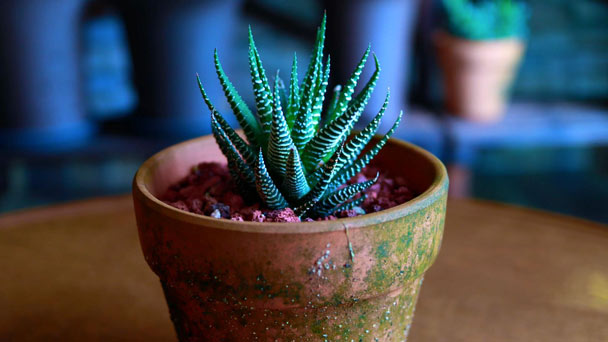
Haworthia Fasciata is a succulent easy to care for that grows well indoors. The scientific name for these guys is Haworthia Fasciata, and their leaves are weird-looking, with horizontal white stripes. Haworthia Fasciata plants are often confused with Haworthia Attenuate because they are very similar in appearance and maintenance. The leaves of Haworthia Attenuate have small bumps that juxtapose the stripes of the Haworthia fasciata.
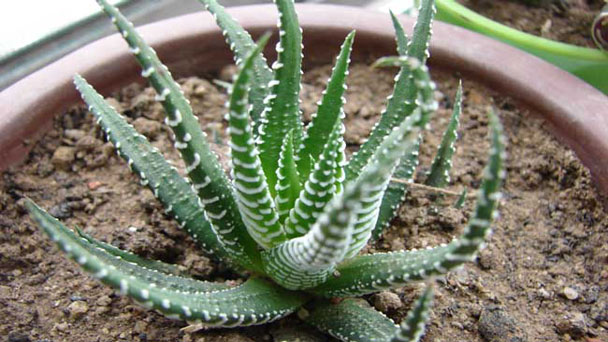
Wait a day for the offset to dry slightly this reduces the chances of the raw “wound” from rotting when added to compost. Then pot up in a small container using a standard potting or cactus compost mix. Water and keep warm.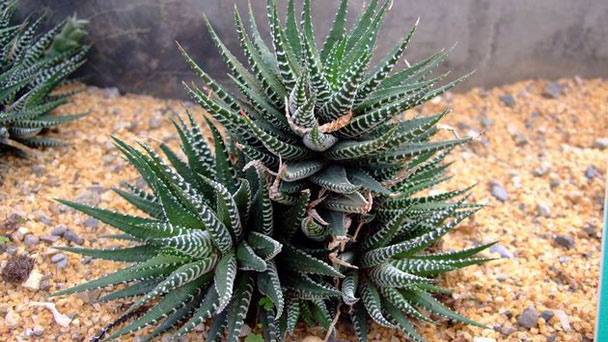
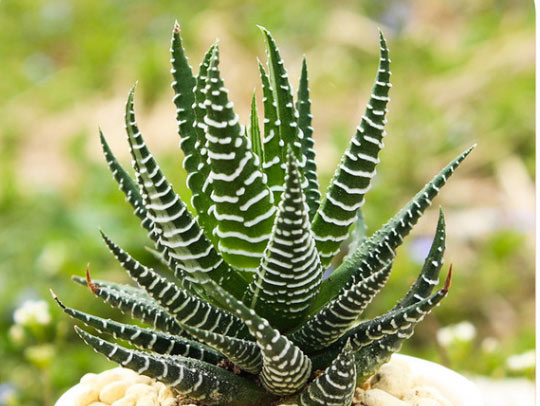
Use a specialist succulents and cacti fertilizer (available from garden centers and Amazon) as it contains all the nutrients that zebra succulents require at the right concentrations to avoid problems with over feeding your succulents.
Avoid using fertilizer in the Winter or during high temperatures in Summer whilst the succulent is not growing as actively.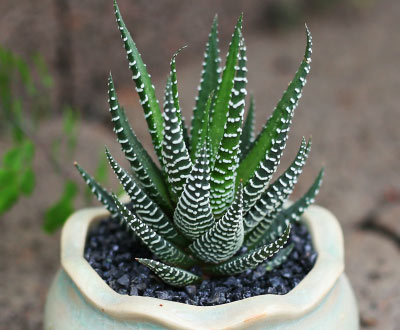
Haworthia margaritifera has warty white projections on the leaves.
Haworthia fasciata features horizontal white stripes and is sometimes called the zebra Haworthia.
Haworthia bolusii has "tufted" edges to the leaves.
Haworthia attenuata features long pointed green leaves.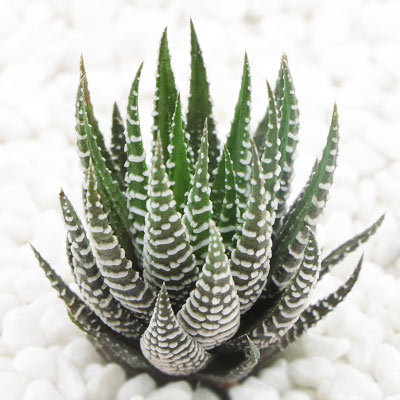
The thick, dark-green fibrous leaves with brilliant white stripes will grow to become an attractive potted Haworthia fasciata plant. If you get the growing conditions just right, its healthy growth will also produce flowers on the end of long stems.
To repot a Haworthia Fasciata, remove the succulent from the pot. Separate any offshoots with a sharp, sterile knife. Check the roots for any signs of disease, such as brown, mushy roots. Clean out the pot and fill it three-quarters full with cactus potting soil. Plant the Haworthia succulent and fill the rest of the space with soil.
If your compact succulent has outgrown its original container, choose a new pot that's one to two sizes larger.
Where to Grow Haworthia FasciataHow to Grow Haworthia FasciataHaworthia Fasciata Propagation with Stem CuttingsHaworthia Fasciata Propagation with OffsetsHow to Care for Haworthia FasciataHaworthia Fasciata Lighting RequirementsHaworthia Fasciata Soil CareHaworthia Fasciata WateringHaworthia Fasciata Temperature & Humidity CareHaworthia Fasciata Fertilizer CareHaworthia Fasciata Pruning CareHaworthia Fasciata Pests & Diseases CareVarieties of Haworthia FasciataHaworthia Fasciata Care FAQHow fast does Haworthia Fasciata grow?Does Haworthia Fasciata Require Repotting?Is Haworthia Fasciata Toxic?
Where to Grow Haworthia Fasciata
Haworthia Fasciata is not cold hardy, so if you live in a zone that gets colder than 30° F (-1.1° C), it's best to plant this succulent in a container that can be brought indoors. It does best partial sun. Plant in an area of your garden that gets 4-6 hours of sunlight in the morning. If given more sunlight it will turn a deep red color showing it is stressed. Too much sun will cause it to turn white and dry up. If grown indoors, place in a window that gets plenty of sun.
How to Grow Haworthia Fasciata
Propagating Haworthia Fasciata is pretty simple and can be done using offsets or stem cuttings. However, most prefer doing it through offset as it is easier compared to using stem cuttings.Haworthia Fasciata Propagation with Stem Cuttings
Now, if you want to try doing it using stem cuttings, all you have to do is to get a healthy one with at least 4 to 6-inches in length. Allow your cuttings to dry out, then place it in a mix of perlite and moist peat. Make sure to cover your cuttings in plastic to retain moisture, and place it in a spot where the temperature is between 70 to 80 degrees Fahrenheit and under indirect sunlight. After about 3-4 weeks, your cuttings should already have grown new pups.Haworthia Fasciata Propagation with Offsets
When you repot your haworthia fasciata you can separate the offsets from the parent. Use a sharp knife and cut as close to the parent Haworthia fasciata plant as possible, ensure the offset has some roots. Sometimes a knife isn't even needed as the offset will be loose like a wobbly tooth and just come away naturally with a small tug. Just don't be too aggressive!Wait a day for the offset to dry slightly this reduces the chances of the raw “wound” from rotting when added to compost. Then pot up in a small container using a standard potting or cactus compost mix. Water and keep warm.

How to Care for Haworthia Fasciata
Haworthia Fasciata Lighting Requirements
Placing your Haworthia Fasciata somewhere where it can receive plenty of indirect sun or bright light is best. If you notice that the leaves are beginning to turn red and curl up, this could be a sign of either too much sun or not enough water. White or yellow leaves are also an indication of too much sun. (Find More Prayer Plant Varieties Here.)Haworthia Fasciata Soil Care
Haworthia Fasciata succulents grow in gritty well draining soils in their native South Africa and to grow zebra succulents successfully indoors it is important to emulate these soil conditions. Ideally, plant your zebra succulent in specially formulated succulent and cacti soil with is prepared to mimic the soil characteristics of the Haworthia fasciata plants native soil conditions with a large particle size and a well draining porous structure.Haworthia Fasciata Watering
Like most succulents, Haworthia Fasciata like to be watered thoroughly but the roots must be allowed to dry out. Haworthia fasciata can usually survive off being watered once a fortnight. In winter it’s important not to over water your Haworthia fasciata plant – they will need much less in the colder weather. Just avoid getting the leaves wet because they are prone to rot.Haworthia Fasciata Temperature & Humidity Care
A temperature range of between approximately 55°F-80°F (13°C-27°C) is best for growing Haworthia fasciata plants. If the temperature exceeds this range then the Haworthia fasciata plant turns dormant to retain moisture. If it is colder then the optimal range the plant can tolerate some cold occasionally but is likely to die back in frost. Zebra succulents are slow growers even for succulents and eventually reach a compact size of 6 inches (15 cm) in height and width. Zebra succulents grow faster in bright, indirect light rather then shade (avoid direct sunlight as this can burn the plant) so if you want to increase the rate of growth a grow light can be used for a few extra hours of light.
Haworthia Fasciata Fertilizer Care
Haworthia Fasciata succulents are adapted to growing in gritty, sandy soils which tend to be low in nutrients, so they do not require as much fertilizer as other house plants. However fertilizer can be used in the growing months, particularly in the Spring and Fall typically once per month for healthy growth.Use a specialist succulents and cacti fertilizer (available from garden centers and Amazon) as it contains all the nutrients that zebra succulents require at the right concentrations to avoid problems with over feeding your succulents.
Avoid using fertilizer in the Winter or during high temperatures in Summer whilst the succulent is not growing as actively.
Haworthia Fasciata Pruning Care
It's not necessary to prune Haworthia Fasciata. The succulent doesn't grow fast, and like many aloes, cacti, and other succulent plants, pruning doesn’t affect growth. The only time you need to trim leaves is if Haworthia fasciata die or you want to propagate from leaf cuttings.Haworthia Fasciata Pests & Diseases Care
Fortunately, Haworthia Fasciata does not suffer from many pest invasions. Spider mites and mealybugs are the most common insects that occasionally plague it. Nothing too unordinary. These scale bugs stick to the leaves, robbing the Haworthia fasciata plant of the essential nutrients. If the Haworthia fasciata plant is attacked, the easiest way to handle this problem is to spray the affected plant using a good-quality pesticide.
Varieties of Haworthia Fasciata
There are more than 100 species of Haworthia, but their classification can be complex. The main difference among the common species is the size of the leaves and the orientation of the white markings on the leaves. In general, the best advice is to buy the most attractive variety to you based on leaf form and markings, as they all have similar cultural requirements. Some popular species include:Haworthia margaritifera has warty white projections on the leaves.
Haworthia fasciata features horizontal white stripes and is sometimes called the zebra Haworthia.
Haworthia bolusii has "tufted" edges to the leaves.
Haworthia attenuata features long pointed green leaves.

Haworthia Fasciata Care FAQ
How fast does Haworthia Fasciata grow?
Haworthia Fasciata is a type of slow-growing succulent plant. These succulents take many years to grow to their maximum height of 4” to 8” (10 – 20 cm). With the proper care, indoor zebra succulents will grow for many years.The thick, dark-green fibrous leaves with brilliant white stripes will grow to become an attractive potted Haworthia fasciata plant. If you get the growing conditions just right, its healthy growth will also produce flowers on the end of long stems.
Does Haworthia Fasciata Require Repotting?
Haworthia Fasciata plants rarely require repotting. The plant's slow growth means that 'Zebra Plants' seldom become rootbound. The reasons to repot a Haworthia Zebra are to separate offshoots for propagation. Or, you could choose to repot the zebra succulent to refresh the potting soil.To repot a Haworthia Fasciata, remove the succulent from the pot. Separate any offshoots with a sharp, sterile knife. Check the roots for any signs of disease, such as brown, mushy roots. Clean out the pot and fill it three-quarters full with cactus potting soil. Plant the Haworthia succulent and fill the rest of the space with soil.
If your compact succulent has outgrown its original container, choose a new pot that's one to two sizes larger.
Is Haworthia Fasciata Toxic?
No, Haworthia Fasciata is not poisonous to cats, dogs, or other household pets.Latest Updated
- Benefits of Bugleweed - 7 Science-backed Health Benefits
- Bugleweed Dangers & Side Effects - Is It Poisonous?
- How to Plant Evergreen Trees - What You Should Know
- When to Plant Evergreens - Grow Guide for Evergreen Trees
- 12 Wonderful Evergreen Shrubs for Your Garden
- 12 Popular Evergreen Plants with Pictures for Beginners
- When And How To Prune A Lilac Bush Like a Pro
- How to Grow & Care for Lilac Vine (Hardenbergia Violacea)
- Japanese Lilac Tree (Syringa Reticulata) Care & Propagation Guide
- Shumard Oak Pros and Cons - What to Know
Popular Articles
- Winter maintenance of Antirrhinum Majus
- How to Grow Terminalia Mantaly Tree
- How to Grow and Care for Crossostephium Chinense
- How to grow Antirrhinum Majus in spring
- Peristeria Elata (Dove Orchid) Profile: Info & Care Guide
- Underwatered Snake Plant (Sansevieria Trifasciata) - Signs And How To Fix
- How to Care for Brazilian Jasmine Plant (Mandevilla Sanderi)
- How to Grow & Care for Graptopetalum Purple Delight in Summer
- Rosa Chinensis (China Rose): Plant Growing & Care Tips
- How to Care for Baby Sun Rose (Aptenia Cordifolia)